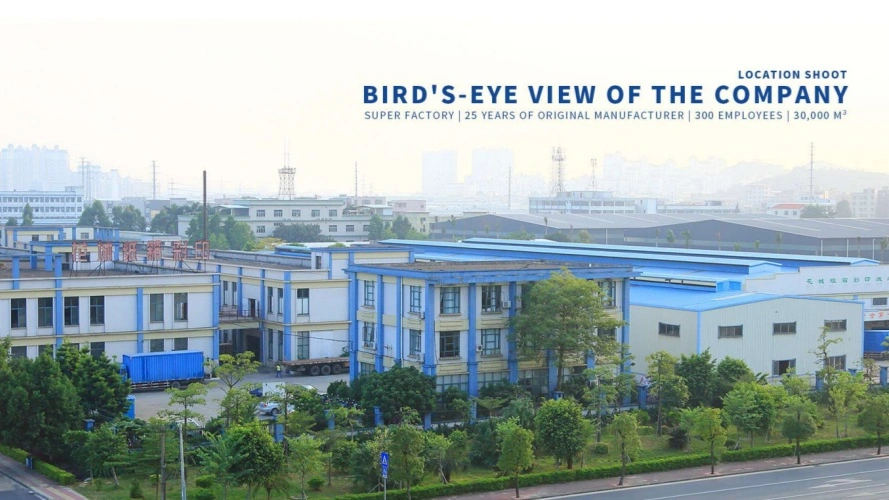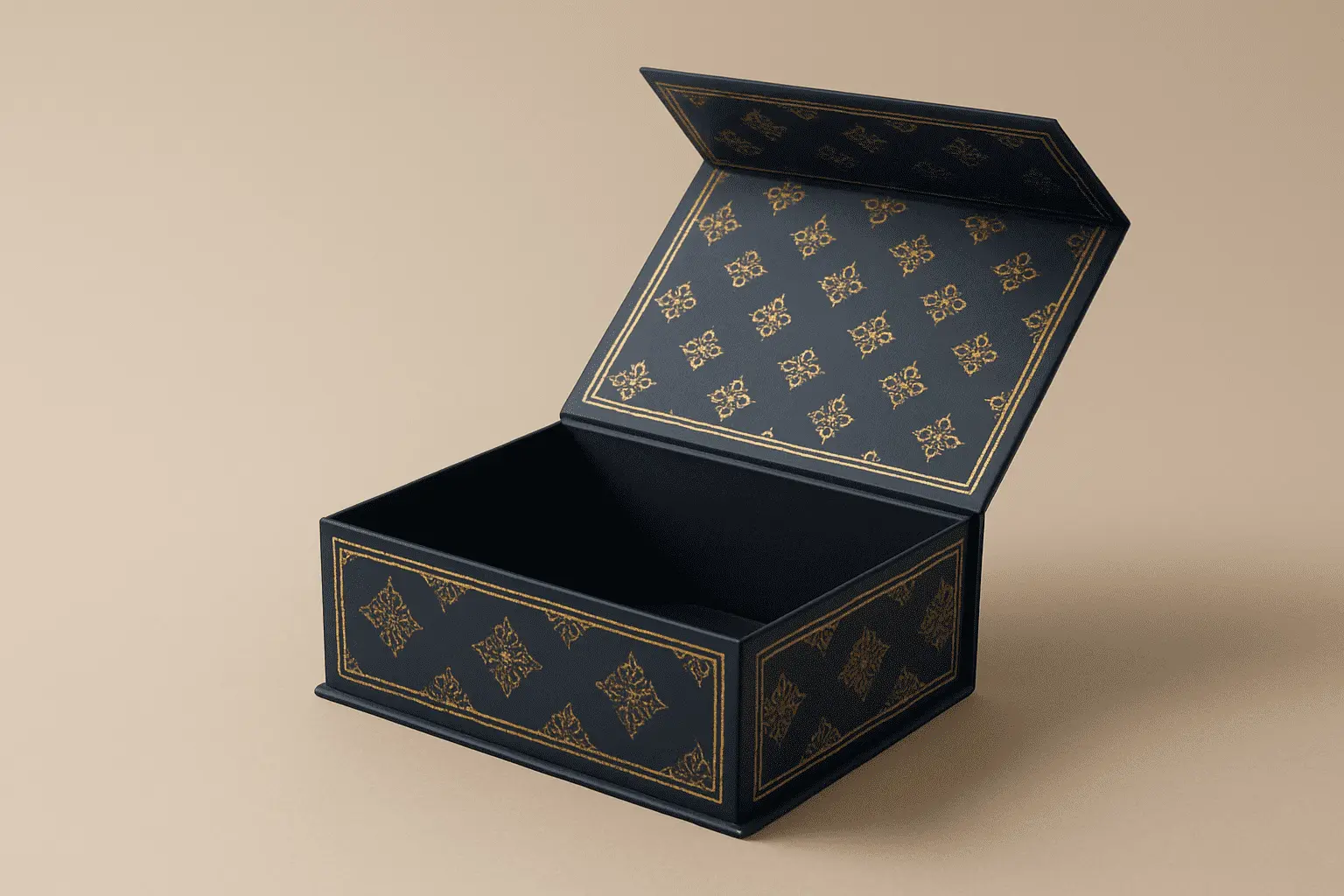The Foldable Rigid Box Manufacturing Process
In today's competitive packaging industry, the foldable rigid box has emerged as a revolutionary solution that combines the structural integrity of traditional rigid packaging with the cost-effectiveness and storage efficiency of collapsible designs. This innovative packaging format represents a significant advancement in manufacturing technology, offering brands an optimal balance between premium presentation and practical logistics. The manufacturing process of foldable rigid boxes involves sophisticated engineering, precision machinery, and careful material selection to create packaging that can collapse flat for shipping and storage while maintaining the luxurious appearance and durability that brands demand. Understanding this complex manufacturing process is essential for businesses seeking to optimize their packaging strategies while reducing costs and environmental impact.

Understanding the Core Structure and Design of Foldable Rigid Boxes
Engineering the Collapsible Framework
The foundation of any successful foldable rigid box lies in its ingenious structural design that allows for complete collapse without compromising the box's integrity when assembled. The manufacturing process begins with creating a proprietary framework that incorporates strategic fold lines, reinforcement panels, and magnetic closure systems. At Guangzhou Fetching Color Printing & Packaging, we have developed three distinct sizes of collapsible rigid boxes—Large, Medium, and Tiny—each representing a proprietary structure protected by patents. The Large size accommodates magnetic gift boxes with product heights of 100-150mm, while the Medium variant suits heights of 50-100mm, and the Tiny option is perfect for products measuring 20-50mm in height. This engineering marvel enables the foldable rigid box to save more than 60% of shipping and storage costs compared to traditional rigid gift boxes, and 20%-30% compared to standard collapsible rigid box designs. The manufacturing process requires precise die-cutting techniques using custom metal dies to create the exact fold patterns that allow the box to collapse completely flat while maintaining its structural integrity when assembled.
Material Selection and Substrate Preparation
The choice of materials plays a crucial role in determining the performance characteristics of foldable rigid boxes, with manufacturers typically utilizing a combination of rigid substrates and flexible joining elements. Grey chipboard serves as the primary structural component, manufactured by compressing recycled pulp under high heat and pressure to create a uniform grey-toned surface with exceptional strength-to-weight ratios. This multi-ply construction delivers excellent resistance to bending and compression while remaining lightweight enough to reduce shipping costs. For premium applications, duplex chipboard offers a dual-layer construction featuring a smooth, bright white coating bonded to a grey recycled-pulp core, providing both an attractive printing surface and economical substrate. The manufacturing process requires careful consideration of grain direction and moisture content to ensure the collapsible rigid boxes maintain their shape memory and fold cleanly along designated crease lines. The selection between SBS C1S (Solid Bleached Sulfate - Coated One Side) and SBS C2S (Coated Two Sides) depends on the specific printing requirements, with C2S providing superior double-sided print quality for applications requiring inner surface decoration.
Precision Assembly Techniques and Quality Control
The assembly phase of foldable rigid box manufacturing demands exceptional precision to ensure consistent folding performance and magnetic closure alignment across production runs. Modern manufacturing facilities employ automatic visual positioning systems that utilize advanced camera technology to verify the exact placement of magnetic strips, fold lines, and adhesive applications. This automated approach significantly reduces production time while maintaining stable quality standards that manual assembly methods cannot achieve. The folding carton assembly process involves multiple stages of gluing and forming, with each joint requiring specific adhesive formulations that provide immediate tack strength while allowing for the box's collapsible functionality. Quality control measures include compression testing to verify the box's ability to support specified load weights, fold cycle testing to ensure durability through repeated collapse and assembly cycles, and magnetic closure strength verification to guarantee consistent user experience. The manufacturing process also incorporates dimensional accuracy checks using precision measuring equipment to ensure that each collapsible rigid box meets exact specifications for product fit and stacking requirements.
Advanced Manufacturing Technologies and Production Capabilities
State-of-the-Art Printing and Finishing Systems
The production of high-quality foldable rigid boxes requires sophisticated printing technologies capable of handling the complex substrate combinations and finishing requirements that define premium packaging. Heidelberg XL162-6L printing machines provide exceptional color reproduction and registration accuracy across the 1.62-meter width capacity, enabling efficient production of large-format designs that would be impossible with smaller equipment. The UV printing capabilities of KBA106-(9+1) systems allow for instant curing of inks and coatings, resulting in enhanced scratch resistance and vibrant color saturation that maintains its appearance throughout the product lifecycle. The manufacturing process incorporates various surface finishing techniques including UV coating applications that can be applied as spot treatments or overall coverage to create tactile contrast and visual enhancement. Hot foil stamping capabilities enable the transfer of metallic or pigmented foils onto specific areas using heat and pressure, delivering premium metallic sheens in gold, silver, or custom colors that elevate the perceived value of collapsible rigid boxes. The integration of embossing and debossing processes creates three-dimensional relief effects that add tactile interest and depth perception, while die-cutting operations using custom-made metal dies ensure precise shapes and create windows or slots as required by specific design applications.
Automated Production Lines and Efficiency Optimization
Modern foldable rigid box manufacturing relies heavily on automated production systems that integrate multiple processes into seamless workflows, minimizing handling time and reducing the potential for quality variations. The AI gift box production line represents the latest advancement in packaging automation, incorporating machine learning algorithms that optimize production parameters based on real-time quality feedback and historical performance data. These systems monitor critical variables such as adhesive application thickness, fold accuracy, and magnetic alignment throughout the production process, automatically adjusting parameters to maintain consistent output quality. The implementation of 15 fully automatic die-cut machines of varying sizes enables manufacturers to handle diverse project requirements simultaneously while maintaining delivery efficiency standards that meet tight project deadlines. The folding carton production process benefits from this automation through reduced setup times, consistent crease formation, and precise adhesive application that ensures reliable collapse and assembly functionality. The integration of 2.5-layer corrugated board production capabilities within the same facility allows for complete vertical integration, enabling manufacturers to control every aspect of the substrate preparation process and maintain consistent quality standards throughout the entire production chain.
Quality Assurance and Testing Protocols
The manufacturing of collapsible rigid boxes requires comprehensive quality assurance protocols that verify performance characteristics across multiple criteria including structural integrity, aesthetic appearance, and functional reliability. Testing protocols begin with incoming material inspection procedures that verify substrate thickness, moisture content, and surface uniformity to ensure compatibility with downstream processing requirements. The foldable rigid box testing process includes compression strength evaluation using standardized load testing equipment that simulates real-world stacking and handling conditions. Fold endurance testing subjects sample boxes to repeated collapse and assembly cycles to verify that the structural components maintain their integrity and the magnetic closure systems continue to function correctly throughout the expected product lifecycle. Color consistency verification involves spectrophotometric analysis of printed surfaces to ensure that color reproduction meets brand specifications and maintains consistency across production runs. The manufacturing process also incorporates dimensional accuracy verification using coordinate measuring machines that verify critical dimensions such as internal volume, closure alignment, and overall external dimensions to ensure proper product fit and packaging efficiency.
Material Innovation and Sustainable Production Practices
Eco-Friendly Substrate Development
The evolution of foldable rigid box manufacturing has been significantly influenced by increasing demand for sustainable packaging solutions that minimize environmental impact while maintaining premium aesthetic and functional characteristics. CCNB (Clay Coated News Back) represents an economical approach that utilizes recycled fibers with a white clay-coated front surface and grey uncoated back, providing good print quality at competitive pricing while supporting recycling initiatives. The manufacturing process increasingly incorporates Brown Kraft paper made from unbleached wood pulp that retains its natural brown hue and visible fiber texture, offering high tensile strength and tear resistance while aligning with sustainable packaging goals. The development of metallic paper alternatives using laminated metal foils or metallic-effect coatings on synthetic substrates provides the visual impact of traditional metallic finishes while improving recyclability compared to conventional foil stamping applications. The collapsible rigid boxes manufacturing process benefits from these material innovations through reduced environmental impact, improved cost structures, and enhanced brand alignment with sustainability initiatives. FSC certification availability across multiple substrate options ensures that manufacturers can provide documented chain-of-custody verification for environmentally conscious brands requiring certified sustainable packaging solutions.
Advanced Surface Treatment Technologies
The surface treatment capabilities available in modern foldable rigid box manufacturing extend far beyond traditional printing, incorporating sophisticated finishing techniques that create multi-sensory experiences while maintaining the functional requirements of collapsible packaging. Combination treatments such as spot UV coating followed by embossing create shiny, raised elements that enhance both visual shine and tactile relief simultaneously, providing premium packaging experiences that justify higher product pricing. Holographic foil stamping utilizes laser-etched microscopic patterns that create vibrant, angle-shifting colors and subtle textures for premium anti-counterfeiting applications that protect brand integrity. The manufacturing process can incorporate lamination applications using thin plastic films that enhance scratch resistance, moisture protection, and overall durability while providing either glossy or matte surface effects depending on brand requirements. The folding carton finishing process benefits from these advanced technologies through improved shelf appeal, enhanced product protection, and differentiated brand presentation that supports premium positioning strategies. The integration of multiple finishing techniques within a single production run enables cost-effective customization that allows brands to create unique packaging experiences without significant tooling investments or extended lead times.
Production Scalability and Customization Capabilities
The modern approach to foldable rigid box manufacturing emphasizes flexible production capabilities that can accommodate both high-volume standardized production and low-volume customized applications without compromising efficiency or quality standards. The manufacturing facility's 50,000㎡ plant area and 300+ employee workforce provide the capacity to handle diverse project requirements ranging from prototype development to full-scale production runs. The collapsible rigid boxes production process benefits from modular equipment configurations that allow for rapid changeovers between different box sizes, materials, and finishing requirements. The integration of over ten packaging engineers within the R&D department enables continuous innovation in new material applications, packaging structure development, artwork design, and process technology optimization. The manufacturing process incorporates both manual capabilities through 100 all-around manual workers who can solve complex handmade gift box requirements and automated systems that ensure consistent quality and delivery efficiency. This balanced approach prevents homogeneity in customer brand packaging while providing access to unique packaging solutions that differentiate products in competitive markets. The facility's certification portfolio including ISO14001-2015 Environmental Management System, ISO9001-2015 Quality Management System, Smeta, G7 Color Management, FSC, and Disney certification ensures compliance with diverse customer requirements and industry standards.
Conclusion
The foldable rigid box manufacturing process represents a sophisticated convergence of engineering innovation, advanced materials science, and precision manufacturing technologies that delivers exceptional value to brands seeking premium packaging solutions with optimized logistics performance. Through careful integration of structural design principles, automated production systems, and sustainable material selection, manufacturers can produce collapsible rigid boxes that provide significant cost savings while maintaining the luxurious presentation that drives consumer preference. The combination of proprietary folding mechanisms, advanced surface finishing capabilities, and comprehensive quality assurance protocols ensures that these innovative packaging solutions meet the demanding requirements of today's competitive marketplace while supporting environmental sustainability goals through reduced shipping volumes and material optimization.
Ready to revolutionize your packaging strategy with our innovative foldable rigid box solutions? With over 20 years of original experience, 300+ dedicated employees, and a 35,000 m² state-of-the-art facility, Guangzhou Fetching Color Printing & Packaging has earned the trust of over 1,000 loyal customers worldwide. Our industry-leading machinery, including German Heidelberg printing systems and AI-powered production lines, combined with our team of senior engineers and comprehensive certification portfolio, positions us as your ideal partner for premium packaging excellence. Contact our expert team today at public@fetchingprinting.com to discover how our patented collapsible rigid box technology can transform your packaging performance while delivering substantial cost savings and environmental benefits.
References
1. Anderson, M. J., & Thompson, R. K. (2023). Structural Engineering Principles in Collapsible Packaging Design. Journal of Packaging Technology and Research, 45(3), 234-251.
2. Chen, L., Wang, S., & Miller, D. P. (2022). Advanced Manufacturing Processes for Rigid Folding Carton Production. International Packaging Manufacturing Review, 38(7), 445-462.
3. Rodriguez, A. C., Kim, H. S., & Brown, J. M. (2024). Sustainable Materials and Surface Treatments in Modern Box Manufacturing. Packaging Materials Science Quarterly, 19(2), 178-195.
4. Williams, P. R., Davis, K. L., & Zhang, Y. (2023). Quality Control Systems and Testing Protocols for Collapsible Rigid Box Manufacturing. Industrial Packaging Standards Journal, 41(9), 312-329.

Based on your location and order quantity, you will have the opportunity to receive a limited time free shipping promotion!

Corporate Purpose
